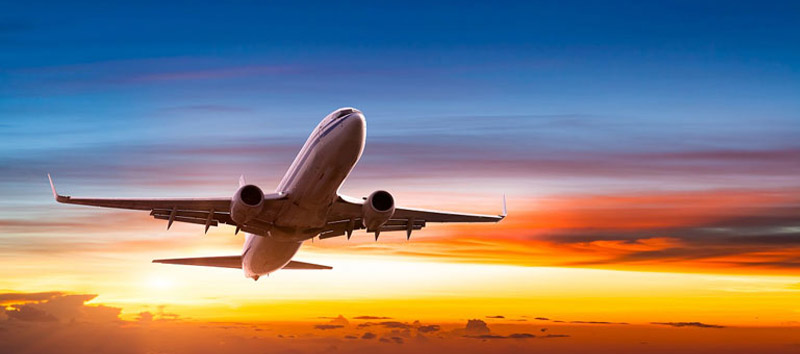How To Ease Pain While Flying
the Blue Skies with these 6 Tips!

Although summer is drawing to a close many of us will still travel to destinations around the world. However, you may not be as excited to go due to chronic back pain which can make flying uncomfortable.
You may already be stressing about the sitting and waiting or who will watch the family dog without having to worry about pain in your back. Reduce the pain with these 6 tips!
My Aching Back
Ever wonder why your back is sore after a flight? Well sitting in the same position for prolonged periods in often cramped spaces can cause your muscles to stiffen and take its toll on your body.
There are often things a person can do prior, during and after a flight that can cause more or alleviate pain to their back and body. People are usually busy trying to get luggages into their cars or hurrying through the airport carrying their heavy bags on their shoulders or pulling them around.
- Pre-Travel
- Strategically Schedule Your Flight
- Provide Support for Your Back During the Flight
- Watch Your Posture and Avoid Slouching
- Move Around During the Flight
- Stay Hydrated During While in the Air
People often forget that taking care of their back often begins before even stepping foot on a plane. When arranging your flight, get a seat assignment to avoid long delays at the airport due to being bumped from a flight. If you don’t receive your seat assignment upon booking, call the airlines to obtain one. You can also participate in pilates classes or other core strengthening exercises, take a brisk walk around your neighborhood to stretch your hamstring or perform side bends or trunk rotations. A few pre-travel exercises or necessary steps can go a long way in keeping pain at bay.
Something you may want to consider is taking a flight where there may be less people on board. With a fairly light passenger load it could provide you with the opportunity to have more room and to be able to lie down across the seats. Contact your airlines prior and tell them of your situation. They may be able to tell you which flights offer the best chance of less travelers. If at all possible try to book a flight where you do not have much layovers or connections between flights.
Use extra pillows or a back roll to give your lower back additional support to prevent pain. Back braces or microfiber infused tube-shaped pillows are common support tools used by passengers traveling on airplanes. If you don’t have an aisle seat, ask the flight attendant if it’s possible to get one. You can tell them it is medically necessary and they’ll make every effort to accommodate your request. Keep your feet in front of you at all times, stretch, also be sure to move your feet and legs to aid in circulation and reduce fatigue.
If you were unable to get a pre-selected seat assignment, request to be seated in a bulk head seating or in the exit row to provide room for legs. This is especially useful for passengers that are tall. You want to avoid bending or crouching over when stowing bags under your seat, use your feet to guide the item underneath. Have extra pillows or blankets handy to position your feet at the right angle. If you have a long flight and choose to sleep during, make sure your head is properly supported with something such as a U-shaped pillow. This will keep your head from moving side to side as you sleep.
Staying seated during a 5 hour flight stresses the spine, thus making any back pain you may have worse that it originally was. If at all possible, get up and move towards an area on the plane where you can do a few quick stretches to ease back stiffness and increase flexibility. Getting up and moving around keeps your blood circulating. If you’re not able to find an area to stretch, you can do a few seat exercises in place such as:
1) Marching in place and getting your knees up as high as you possibly can in your limited space.
2) Do ten to twenty “butt squeezes" by holding in each buttock at a time for a count of 10.
Keeping yourself well hydrated by drinking lots of water during flying, can keep your body cool and ward off any dehydrated blood that may try to make its way into your body. This often causes headaches, muscle or even joint stiffness that may plague a person after travelling. Also, try to avoid drinking any caffeinated drinks such as coffee, tea or soft drinks which can lead to dehydration. Water is your best friend while flying.
Pain After Flying
If you begin to experience pain after your flight make sure to get up and move around. You want to avoid sitting or lying down for extended periods so that any pain currently being felt does not get worse. It is advisable to make an appointment with your chiropractor or call us to set up an appointment. An adjustment after flying or even before can help minimize pain and get you on the road to recovery.
Here are Stanford Chiropractic, we provide you post visit resources and exercises that can highly benefit your long term progress. Call Today for a FREE Consultation at (650) 461-4020





